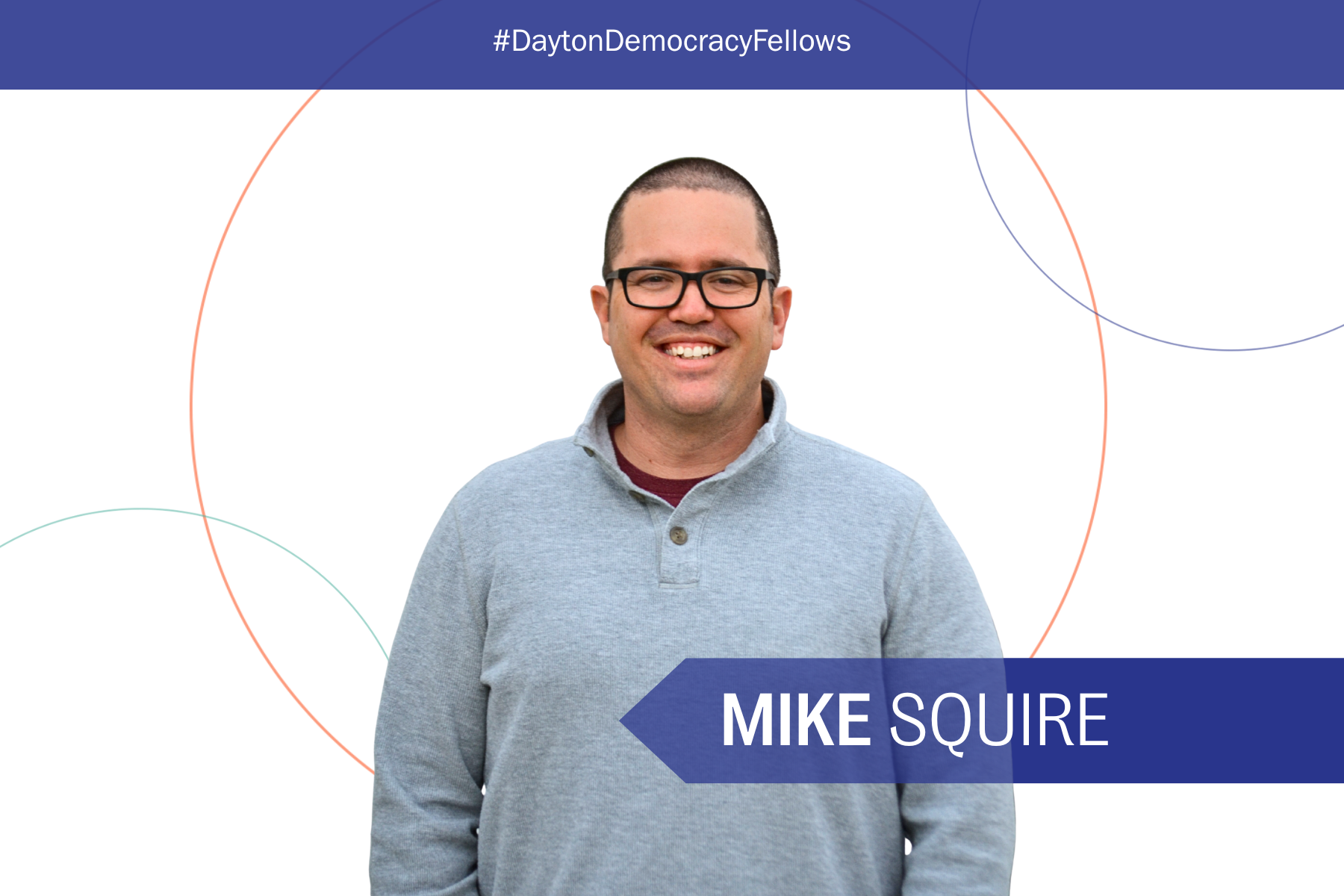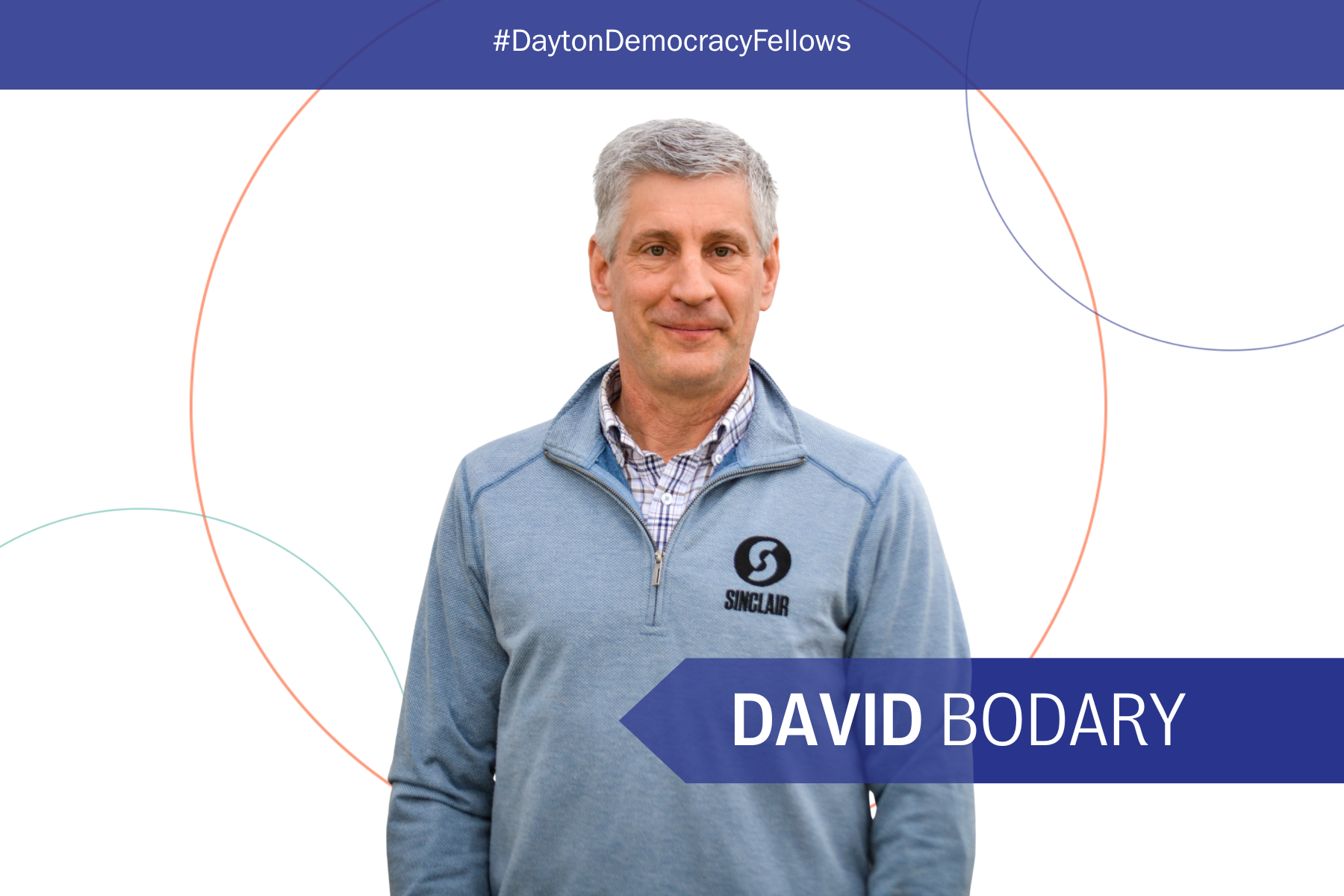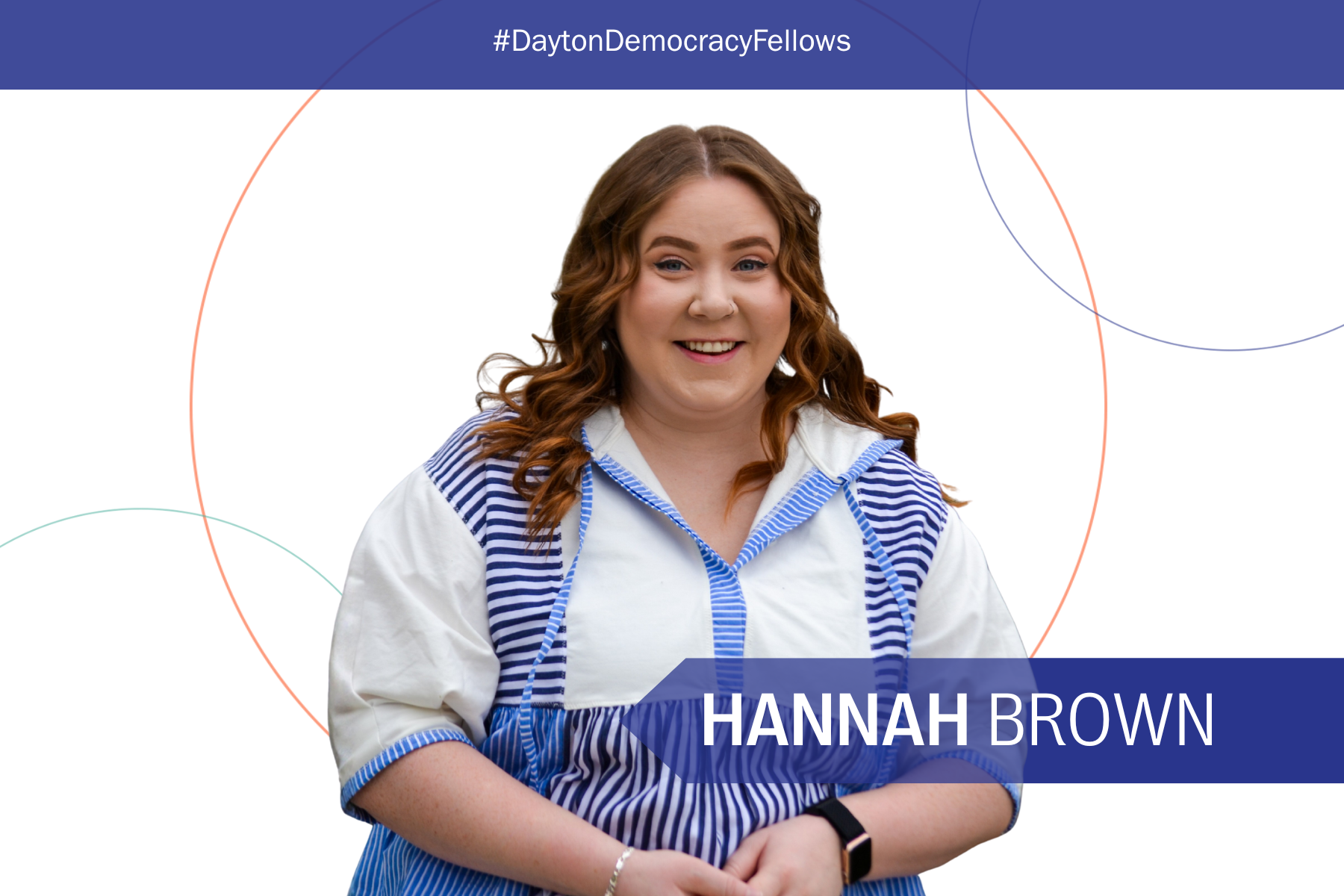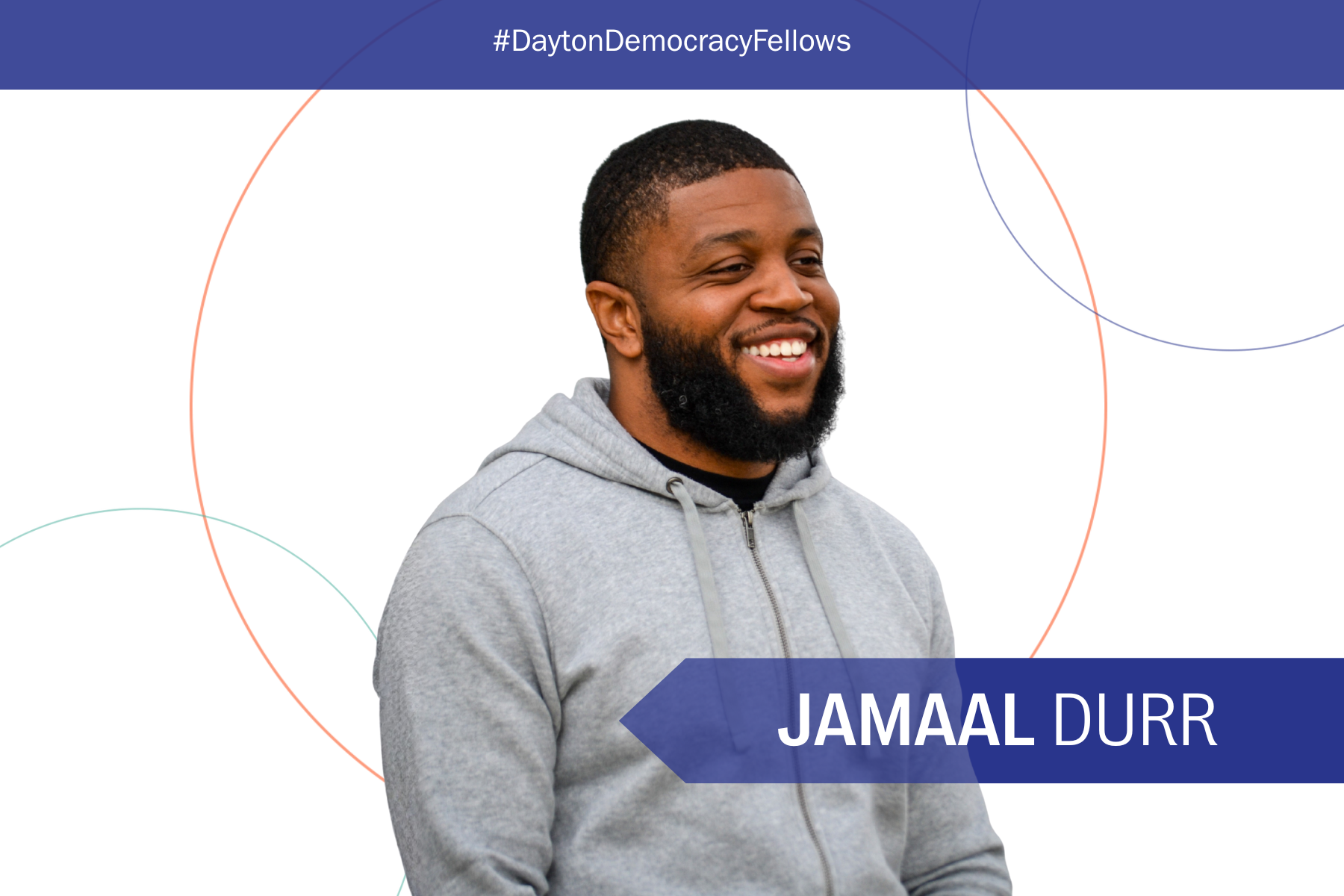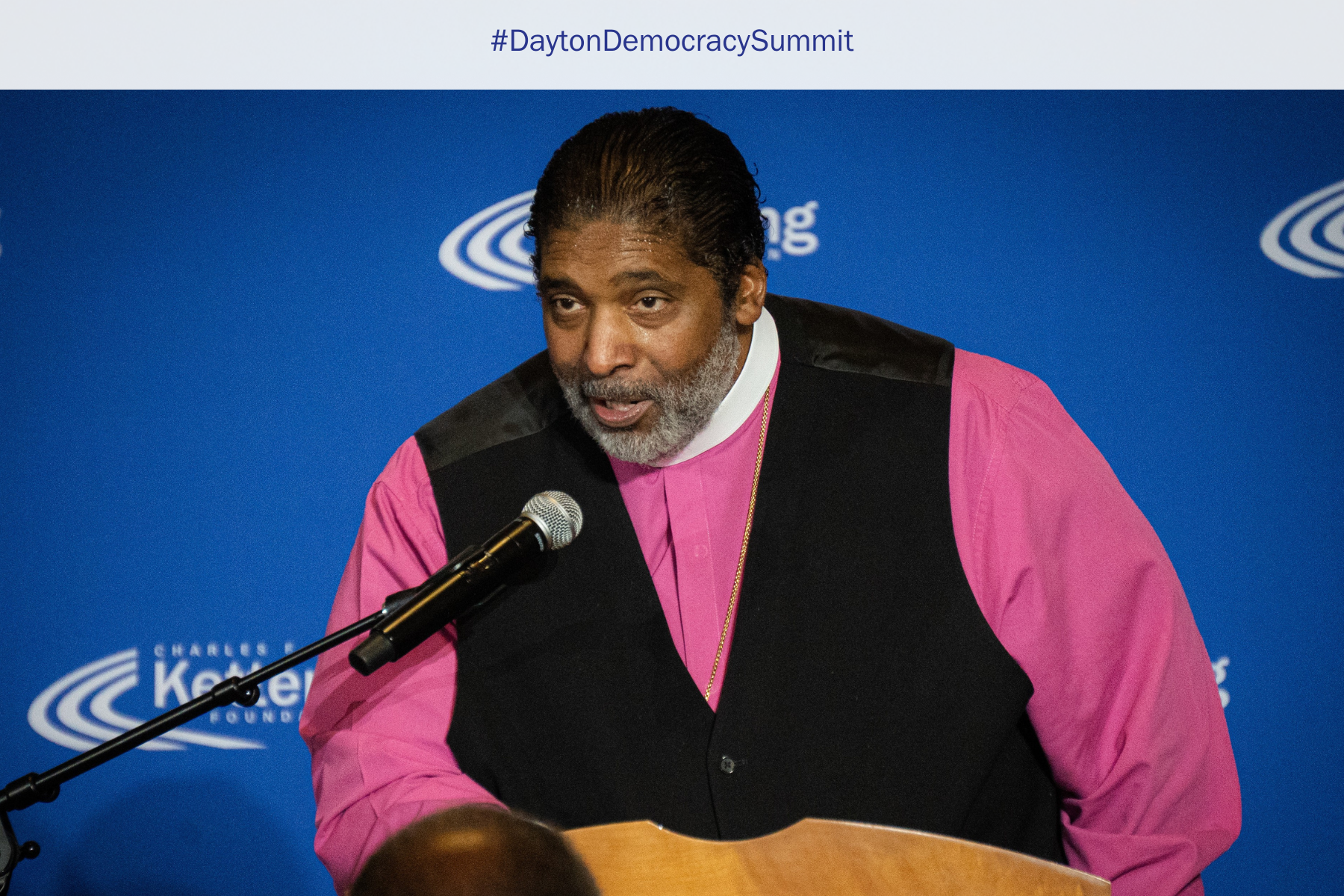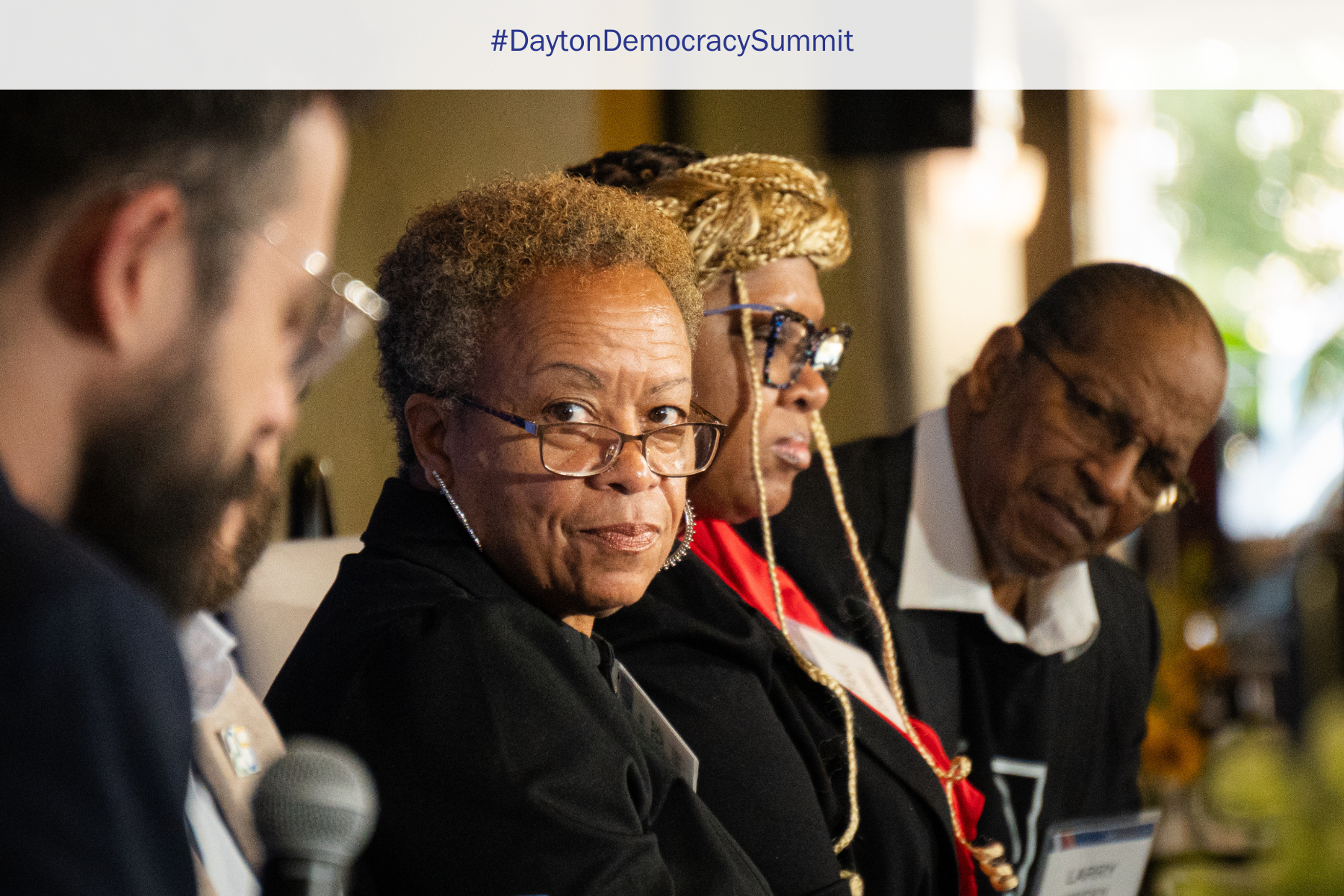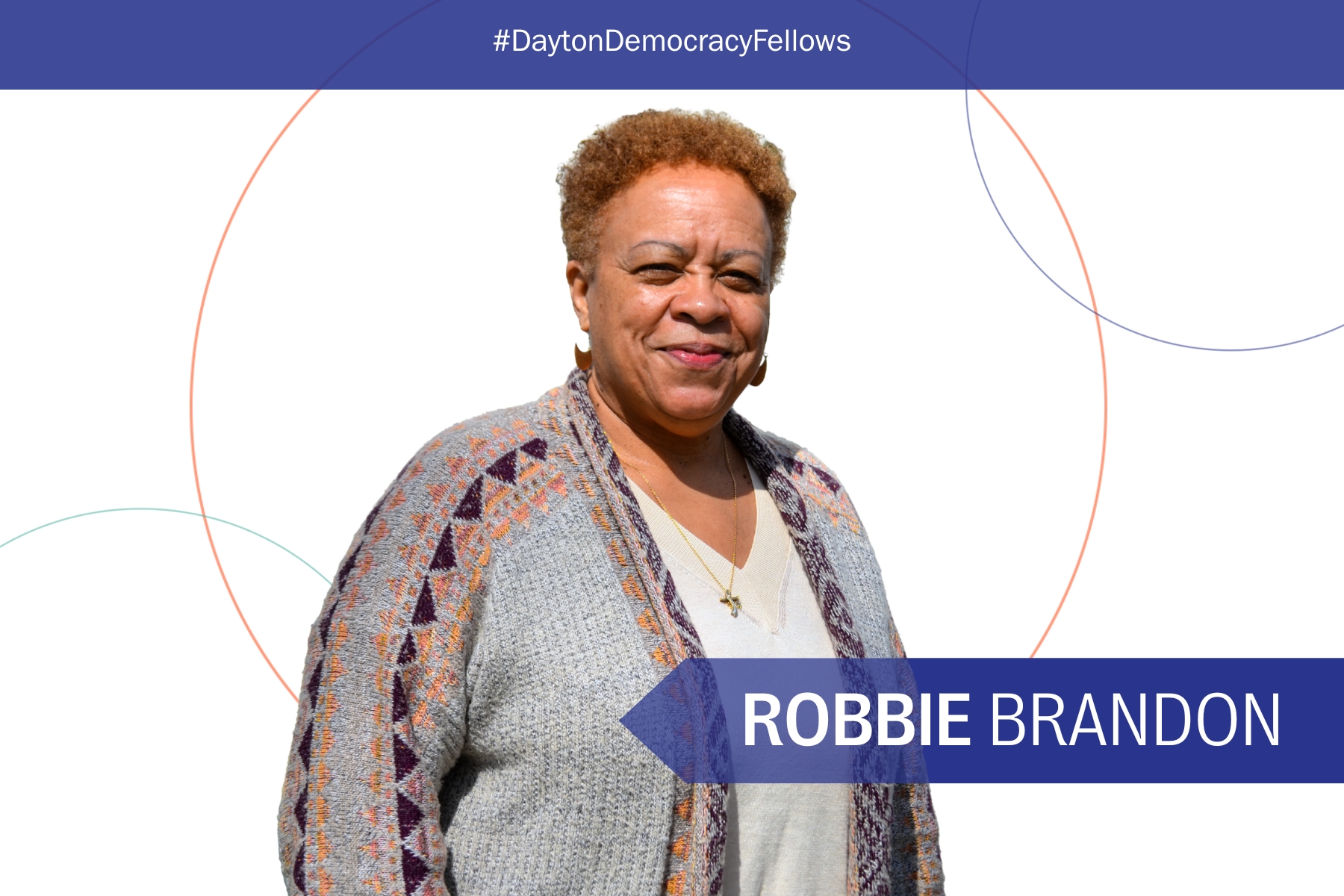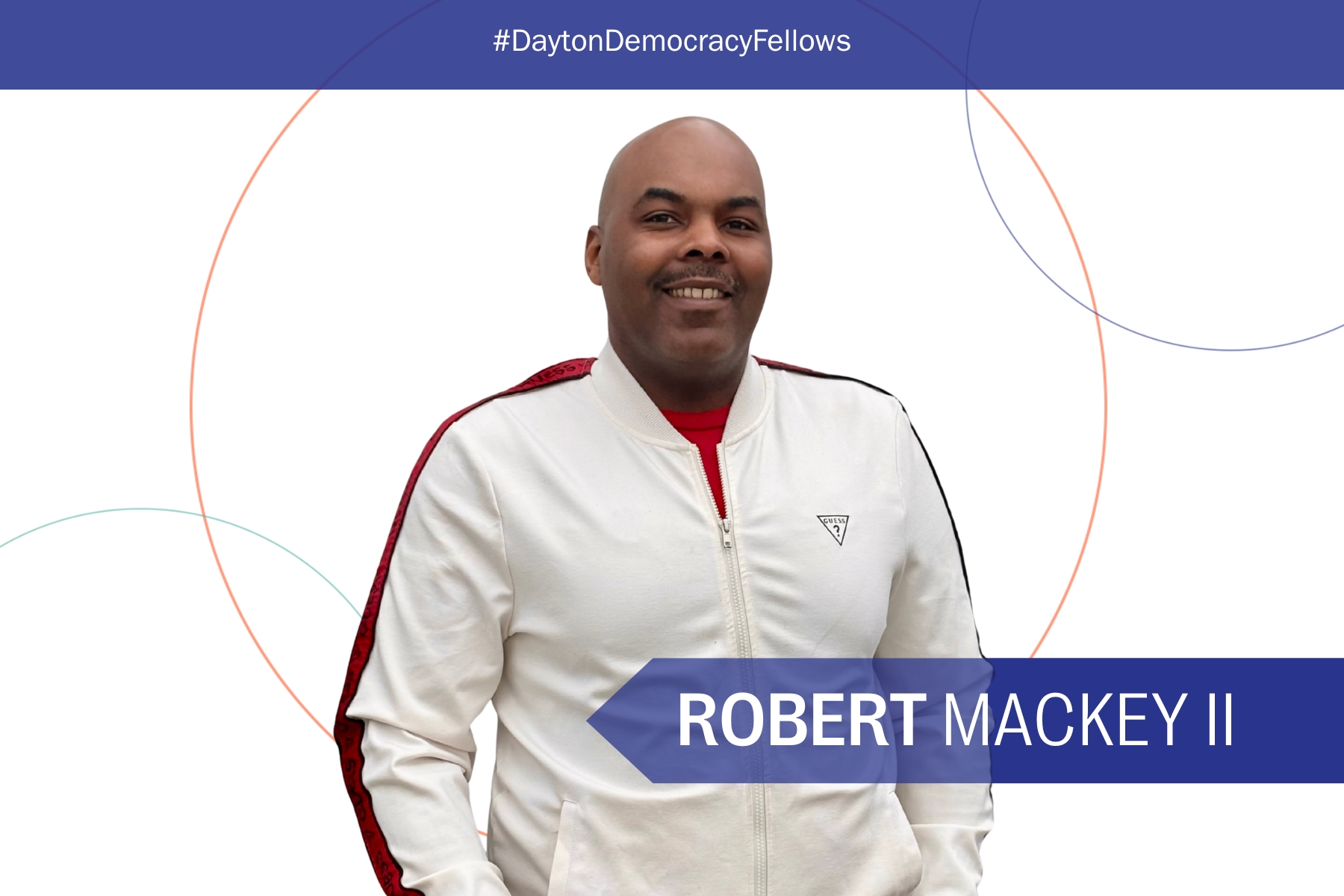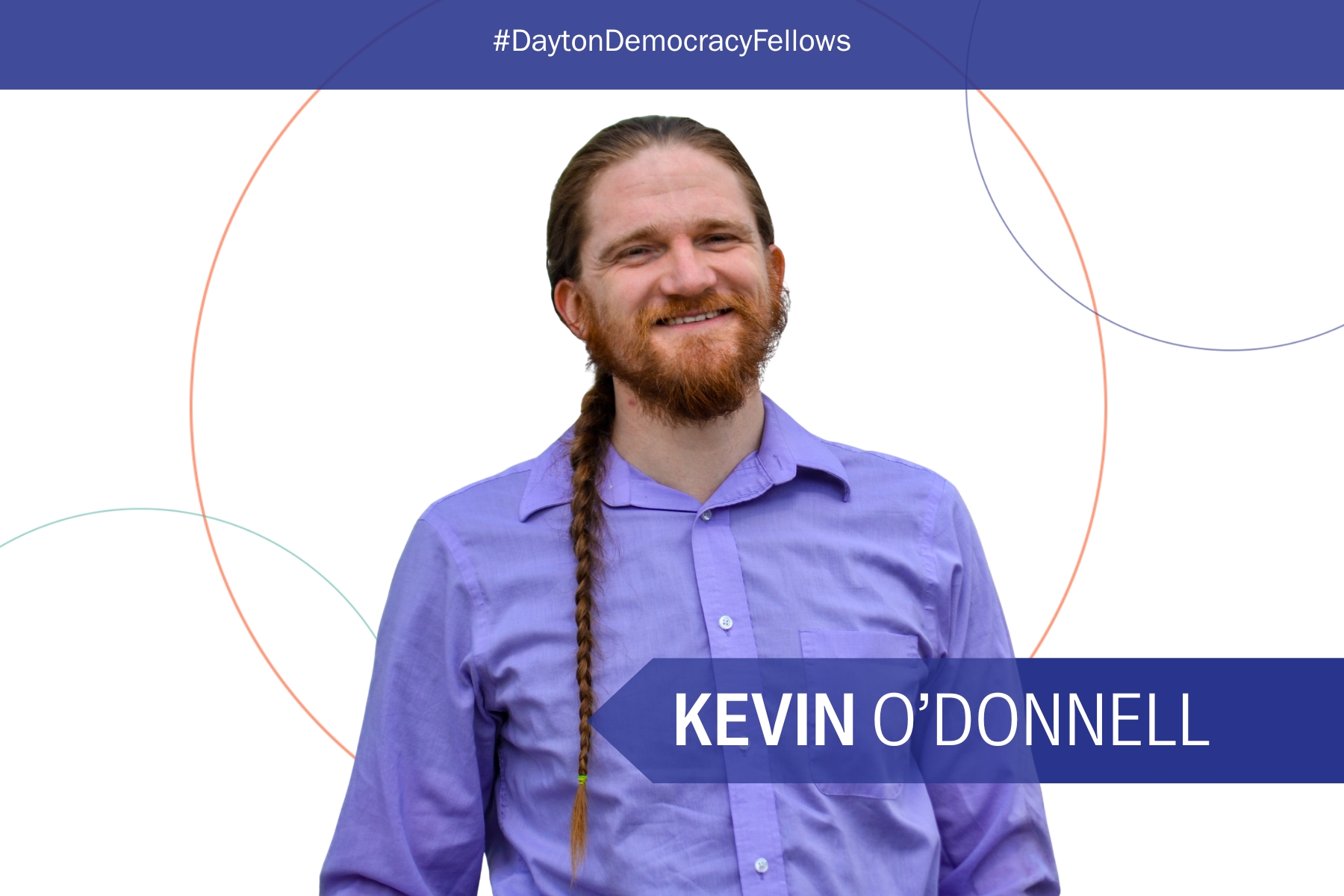The Power of Storytelling: Breaking Barriers to Democracy and Belonging
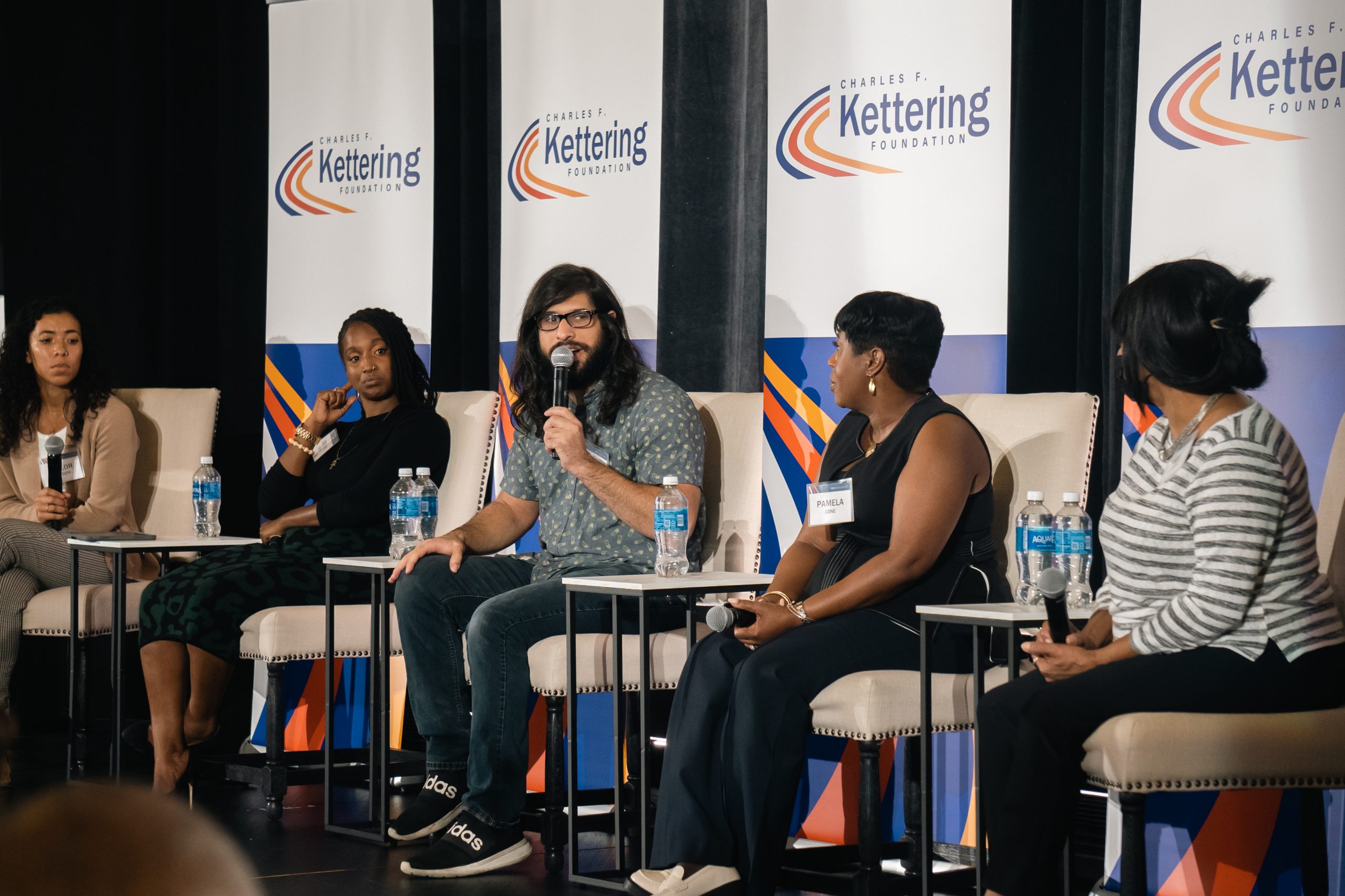
Dayton Democracy Summit Panel: Why We Do What We Do
Taylor Johnson (far left) moderated a panel included five Dayton Democracy Fellows: (left to right) Destiny Brown, Vibes, Pamela Cone, and Dee Wooding. The panelists shared personal stories and reflected together about the connections to issues of democracy and belonging.
This article is part of a series of stories covering Kettering’s Dayton Democracy Summit. The event was held on September 20 at Sinclair College in Dayton, Ohio.
One of the slogans people and movements have used to expand democracy has been “the personal is political.” This is the idea that what we often consider personal or private is not only about personal choices but also are connected to bigger systems and structures.
In the panel discussion, Why We Do What We Do, panelists shared personal stories and reflected together about the connections to issues of democracy and belonging. The panel included five Dayton Democracy Fellows: Destiny Brown, Pamela Cone, Dee Wooding, and Vibes, and Taylor Johnson, who served as moderator.
There is power in storytelling. It opens the door to trust, transparency, and the ability of people to see themselves in the stories shared. Despite the power in one-on-one conversations or large group discussions, all four panelists admitted that shame often prevents people from sharing their stories. Cone urged the audience to share experiences that have a stigma attached because “people can become unstuck when they hear your story. When we share our stories, we remove stigma and shame and share hope.” At the Dayton Tenant Union, Brown sees shame among the people she works with and how it keeps them silenced, even though it shouldn’t be their burden. Vibes agreed, pointing out that shame exists only because of another person. Wooding shared that her community, Westwood, has an aging population, and many there carry shame because they struggle with the upkeep of their yards and homes. But the community is resilient and not willing to turn its back on the most vulnerable.
Shame is one barrier to helping people feel like they belong, but it is not the only one. In her work, Wooding sees many people who are tired of talking about the past and the problems of today. They want to get to the solutions and lack opportunities to be involved at key decision points. Cone, Vibes, and Brown all agreed that the institutional systems in place are a barrier. Brown said the solution is to “confront the system and work on a new system where the people who are impacted work with those who are not impacted.” It is easier to effect change when you have access to the right information, know the right questions to ask, and have the time to devote to the work.
Each panelist highlighted the need for collective action to overcome barriers to involvement and foster community engagement. They shared several ways to accomplish this:
- Show up and be in the room.
- Have ears to listen or hold space for people to share their story.
- Be more empathetic and void of judgment.
- Help to create equity.
- Be welcoming to everyone—even those outside of your own community who want to help.
Johnson ended the discussion by asking the panel, “How do things look and feel when there are no barriers? What does a community look like for you?” Vibes sees a future “where we can celebrate how far we’ve come and where we’ll go.” His work focuses on the capacity building, systems change, and community building needed to get there. Wooding envisions a community where individuals “look deep inside of themselves to see how they can give.” When asked for one word that reflects what is possible, Brown responded, “Capable.” Cone replied, “Growth.” Despite the stigma and shame that many may feel, community members have the capability to grow as a community and create an inclusive democracy together.
